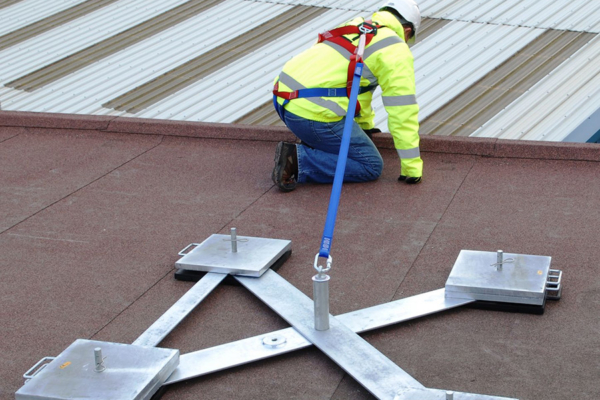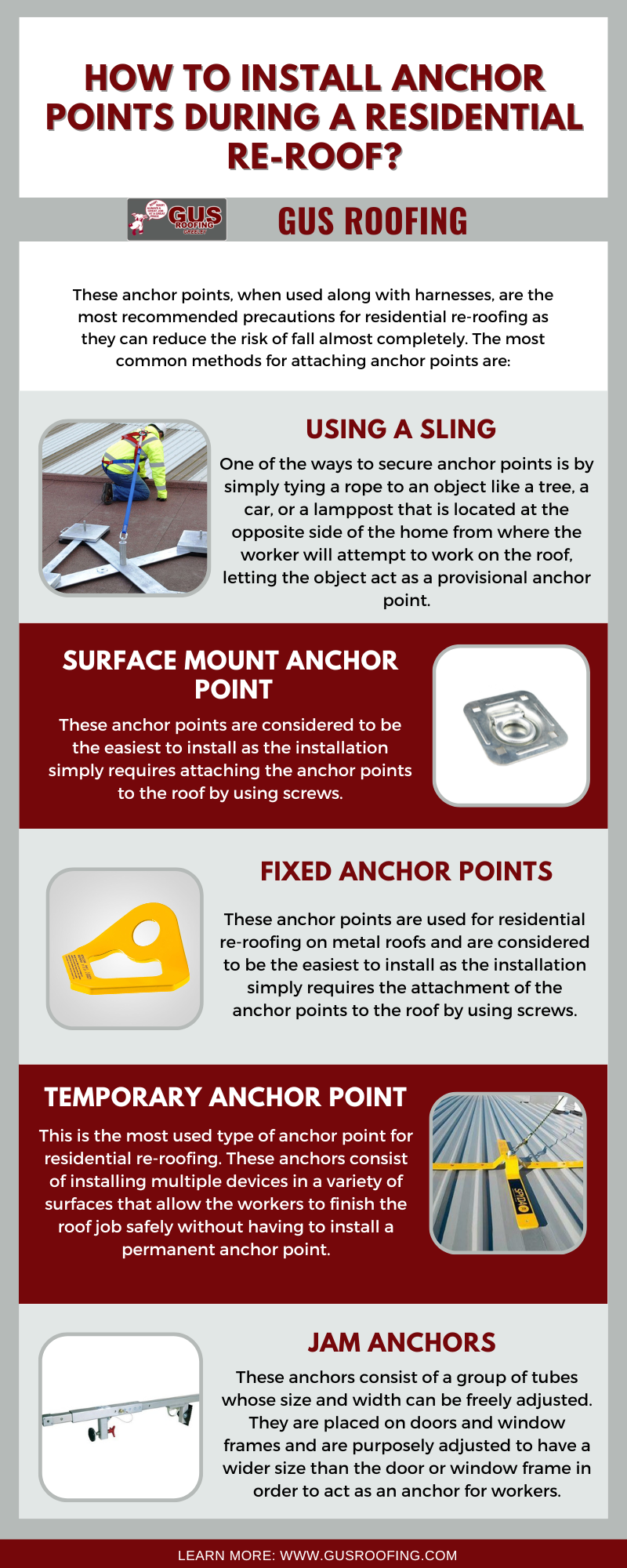How To Install Anchor Points During A Residential Re-Roof?
Working on top of roofs is considered a hazardous task for good reason.
When you decide to climb to the top of a roof for any type or re-roof you must keep in mind the various things that can put you at risk such as:
-
The roof’s surface: does your roof have an uneven or slippery surface?
-
Roof stability: Is the roof capable of sustaining your weight?
-
A loose ladder: always make sure your ladder is secured before climbing to a roof and, if possible, ask someone to hold it for you.
-
The pitch of the roof: steep roofs are known to let water and ice slip off, but they can also make you slip if you’re not careful.
-
Dangerous substances: watch out for substances like asbestos, paint fumes or other dangerous chemicals.
-
The weather: has it been snowing or raining lately? A wet roof significantly increases the chances of a slip and fall from the roof while performing a the work.
All of this increases the chance of falling from the roof dramatically during a residential re-roofing project and is the reason why insurance is a must-have when hiring a roof contractor for a residential re-roof.
In order to reduce these risks it is necessary to take certain precautions such as using ropes, harnesses and most importantly setting anchor points. These anchor points when used along with harnesses are the most recommended precautions as they can reduce the risk of falling almost completely.
The most common methods for attaching anchor points are:
By using a sling
One of the ways to secure anchor points is by simply tying a rope to an object like a tree, a car or a lamppost that is located at the opposite side of the home from where the worker will attempt to work on the residential rof, letting the object act as a provisional anchor point.
However, when choosing this method to install anchor points, it is important to make sure that the rope is tightly secured and that the object is able to resist the extra weight, avoid tying the rope to places that are unable to handle too much weight such as window frames or car wheels as these are usually not able to handle heavy weights.
Surface mount anchor point
These anchor points are used for residential re-roofing on metal roofs and are considered to be the easiest to install as the installation simply requires to attach the anchor points to the roof by using screws, click here for more.
Fixed anchor points
Another way of installing anchor points is by simply fixing them into the walls of your home usually near the center of the roof, most homeowners try to avoid this because even though the anchor points can be removed, the visible holes remain on the walls which is why homeowner’s commonly prefer temporary anchor points for projects.
Temporary anchor point
This is the most used type of anchor points for residential re-roofing as these anchors consist of installing multiple devices in a variety of surfaces that allow the workers to finish the job safely without having to install a permanent anchor point and unlike the permanent options temporary anchor points don’t leave holes in your walls, making them the perfect choice for one time jobs.

Jam anchors
These anchors consist of a group of tubes which size and width can be freely adjusted, they are placed on doors and windows frames and are purposely adjusted to have a wider size than the door or window frame in order to act as an anchor for workers.
Anchor points can be an incredibly helpful thing to have during a residential re-roof if installed correctly, as the fall protection it provides for workers can help greatly in reducing accidents.
However, if incorrectly installed anchor points can do more harm than good which is why it is so important to hire an expert if you don’t know how to install it properly. At Gus Roofing we are able to assist you with your anchor points installation as well as with all your roofing needs. If you’d like our help, get in touch with us and tell us what you’re dealing with. We’ll be glad to help.
If you need help with securing your anchor points, contact us today and we’d be glad to help: https://www.gusroofing.com/



 https://www.gusroofing.com
https://www.gusroofing.com